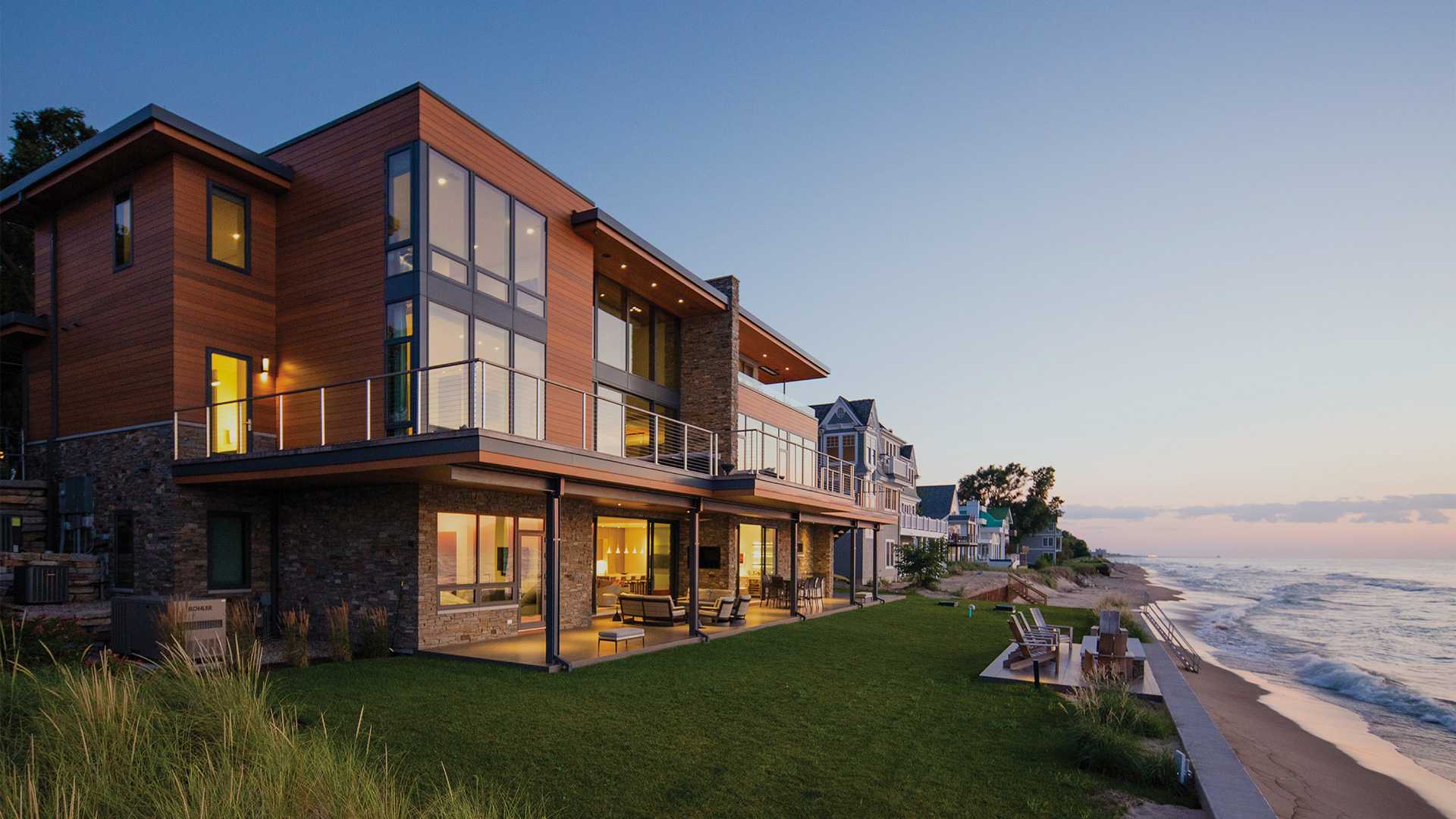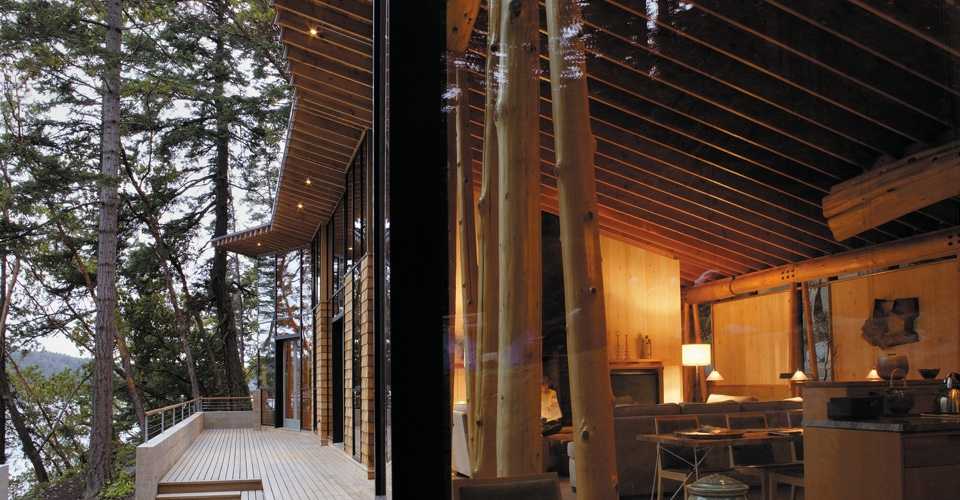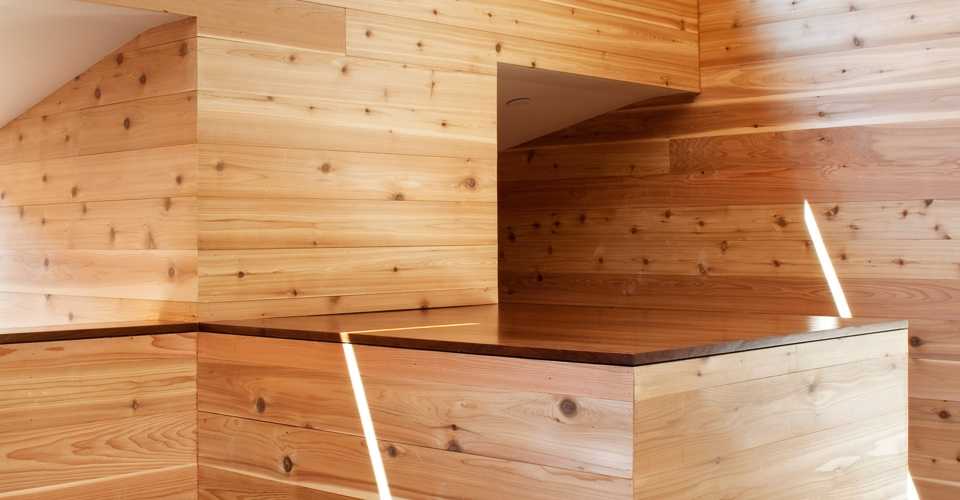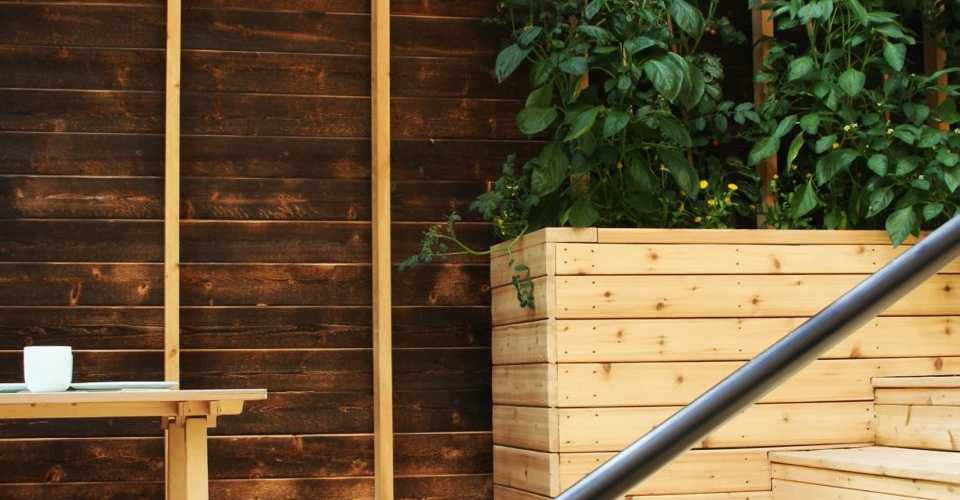Back
Back
Back
Back
Back
Back
Back
Back
Back
Back
USA & Canada
A
Air-Dried: (see Seasoned)
ALS: American Lumber Standard. Grading standards and nomenclature for American softwood lumber.
APA: American Plywood Association
Arbor: An axle or spindle that supports cutting tools that spin or rotate.
AWPA: American Wood Preservers Association
B
Band Saw: A saw consisting of a continuous piece of flexible steel, with teeth on one side or both.
Bastard Sawn: Lumber cut where the annual rings make angles of 30 to 60 degrees with the surface of the piece.
Beam: A structural member supporting a load applied transversly to it.
Bolt: Usually a short log of a length suitable for manufacturing pulpwood or peeling veneer.
C
Cant: A large slabbed log on the headsaw, usually having one or more rounded edges, which is destined for further processing.
Check: A lengthwise separation of wood, normally occurring across or through the rings of annual growth and is usually the result of seasoning.
Chipboard: A panel made with large chips as the raw material.
Circular Saw: A round saw having teeth on its perimeter.
Composite: A wood product produced by bonding wood fiber by heat and pressure.
Cooperage: Containers having two round heads and a body composed of staves, such as barrels or kegs.
Cord: A unit of measure equal to a stack of wood 4x4x8 feet or 128 cubic feet.
Core: Inner plies in a piece of plywood whose grain direction runs perpendicular to that of the outer plies.
D
Delivered Price: The price of wood with freight included.
Delignification: Removal of lignin from wood by chemical treatment.
Density: The mass of wood substance enclosed within the boundary surfaces of a wood-plus-voids complex having unit volume.
Dimension: Lumber that is from two inches up to, but not including, five inches thick, and that is two or more inches in width.
E
Edger: Sawmill machinery used to saw cants after they come off the headrig, squaring the edges and ripping the cants into lumber.
Edging: Waste pieces of wood cut by an edger.
Excelsior: Long, curly, slender strands of wood used as an aggregate component for some particleboards and as a packing material.
F
Fiberboard: A composite panel product like particle board, hardboard, chipboard.
Fines: Fine milled chips used in the production of particleboard; larger than sander dust or wood flour.
Flake: A small flat wood particle of predetermined dimensions, uniform thickness, with fiber direction in essentially in the same plane of the flake.
Flitch: A log sawn on two or more sides form which veneer is sliced.
Flooring: A tongue and grooved piece of wood lumber used in constructing a floor.
Forestry: The science of forest management.
Framing: Lumber used for structural members in a house or other building.
G
Gang Mill: A machine in which several saws make parallel cuts.
Grade: The designation of the quality of a manufactured piece of wood or of logs.
Grain:The direction, size, arrangement, appearance, or quality of the fibers in wood or lumber.
Greenchain: A moving belt or chain on which lumber is transported from saws to areas where workers stack the wood by certain specifications.
H
Heading: The pieces of lumber from which a keg or barrel head is cut.
Headrig: The principle saw in a sawmill on which logs are first cut into cants.
I
Insulation Board: A board made from ligno-cellulostic fibers, usually wood or cane which are interfelted to create the principal source of bond.
J
Joint: The place where two or more pieces of material meet.
Joist: A piece of lumber or composite I-beam product that supports a ceiling or floor.
K
Kerf: The width of a saw cut.
Kiln: A chamber having controlled air-flow, temperature, and relative humidity for drying wood products.
Kraft: A heavy paper or paperboard made from wood pulp using a method of boiling wood chips in a sodium sulfate solution.
L
Laminate: The bonding of two or more pieces of wood to make a single piece.
Lathe: A machine on which logs are peeled to yield veneer for plywood.
Lignin: The second most abundant component of wood. It is a cementing layer between the wood cells.
Lumber Scale: A volumetric measurement used in determining the amount of lumber produced.
M
MBF: Thousand board feet
MDF: Medium Density Fiberboard
Millwork: Lumber that has been remanufactured into door and window parts or decorative trim.
N
Naval Stores: A general term for chemical that can be extracted from wood.
O
OSB: Oriented Strand Board
P
Pallet: A low wood platform on which material can be stacked to facilitate mechanical handling.
Panel: A sheet of plywood, particleboard, or other similar product, usually of standard size, such as 4×8 feet.
Parallel-Laminated Veneer: Veneers which grains have been glued parallel to one another.
Particleboard: A term used to describe panel products made from particles of wood larger than fiber.
Peel: To produce veneer by revolving a peeler block against a knife.
Piling: Round timbers or poles driven into the ground to support a load.
Planer: A machine to surface rough lumber. Plywood : A panel made up of thin sheets of veneer which the grain direction is at right angles to each other.
Pressure Treating: A process of impregnating wood products with chemicals by forcing into the structure of wood with high pressure.
Pulp: A soft, moist mass of wood fiber used in the manufacture of paper.
Q
Quarter Sawn: Lumber sawn so that the annual rings form angles of 45 to 90 degrees with the surface of the piece.
R
Radial Sawn: (see Quarter Sawn)
Resaw: To saw a piece of lumber along its horizontal axis.
Resin: A natural vegetable substance occurring in various plants and trees, especially the coniferous species.
S
Sash: The portion of a window that holds the glass.
Sash Gang: A series of blades that are fixed vertically between two horizontal members; used to rip cants.
Saw Arbor: The shaft and bearings that hold a power-driven saw.
Scoot: Inferior hardwood lumber.
Seasoned: Green wood, either air-dried or mechanically dried to remove moisture to improve serviceability.
Shake: A lengthwise grain separation between growth rings, or a break through the rings, usually the result of high winds.
Shear: The tendency of wood fibers to slide longitudinally.
Sheathing: Plywood, waferboard, OSB, or lumber used to close up side walls.
Slab: The exterior portion of a log removed by a saw, having one flat and one curved surface.
Sliced Veneer: Veneer that is cut from a block using a knife which results in individual pieces instead of a continuous sheet .
Stud: Slender wood structural member used as a supporting element in walls and partitions.
Stumpwood: Wood product taken from the stump portion of a severed tree.
Stumpage: The monetary value of standing timber.
T
Tall oil: A byproduct of the paper-making process. Distilling tall oil produces many products like adhesives, carbon paper, inks, lubricants, and gasoline additives.
Trimer: A beam that receives the end of a header in floor framing.
U
Unit: A stack of lumber or plywood, usually of a standard size.
Under-Run: A loss in inventory volume, so that the amount manufactured or sold was less than was indicated by the volume of raw material.
V
Veneer: Wood peeled, sawn, or sliced into sheets of a given constant thickness and combined with glue to produce plywood.
W
Waferboard: A panel product of wafers of wood bound together by resin, heat, and pressure; can be made of species not suitable for lumber or plyboard production.
Wane: Bark, or the lack of wood from any cause, on the edge or corner of a piece of lumber.
Y
Yard: A place where wood products are stored of or made available for sale.
Z
Z Flashing: Z shaped metal flashing applied between panels of plywood siding to shed water.
© 2025 All rights reserved
Gatsby Website Development by Jambaree



